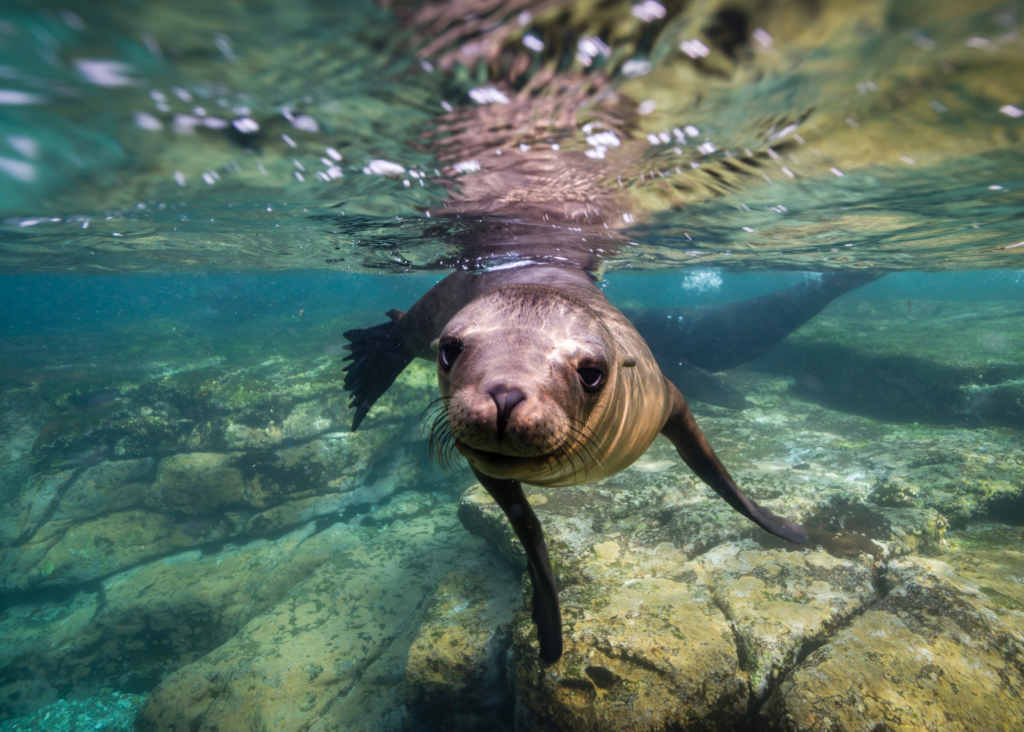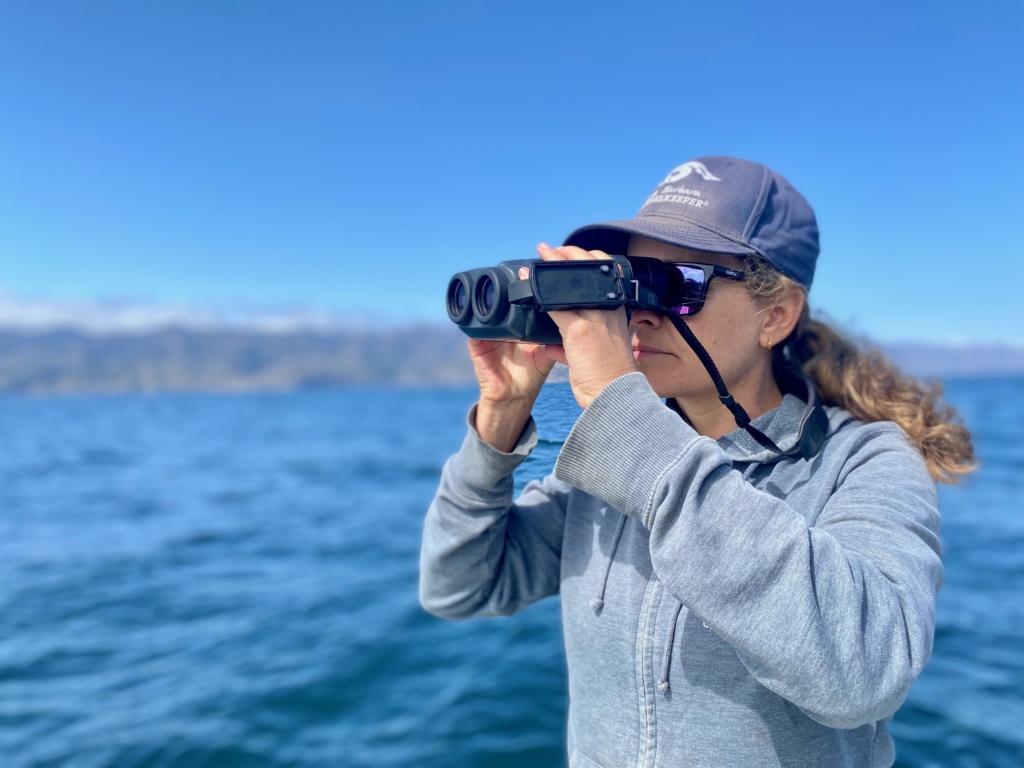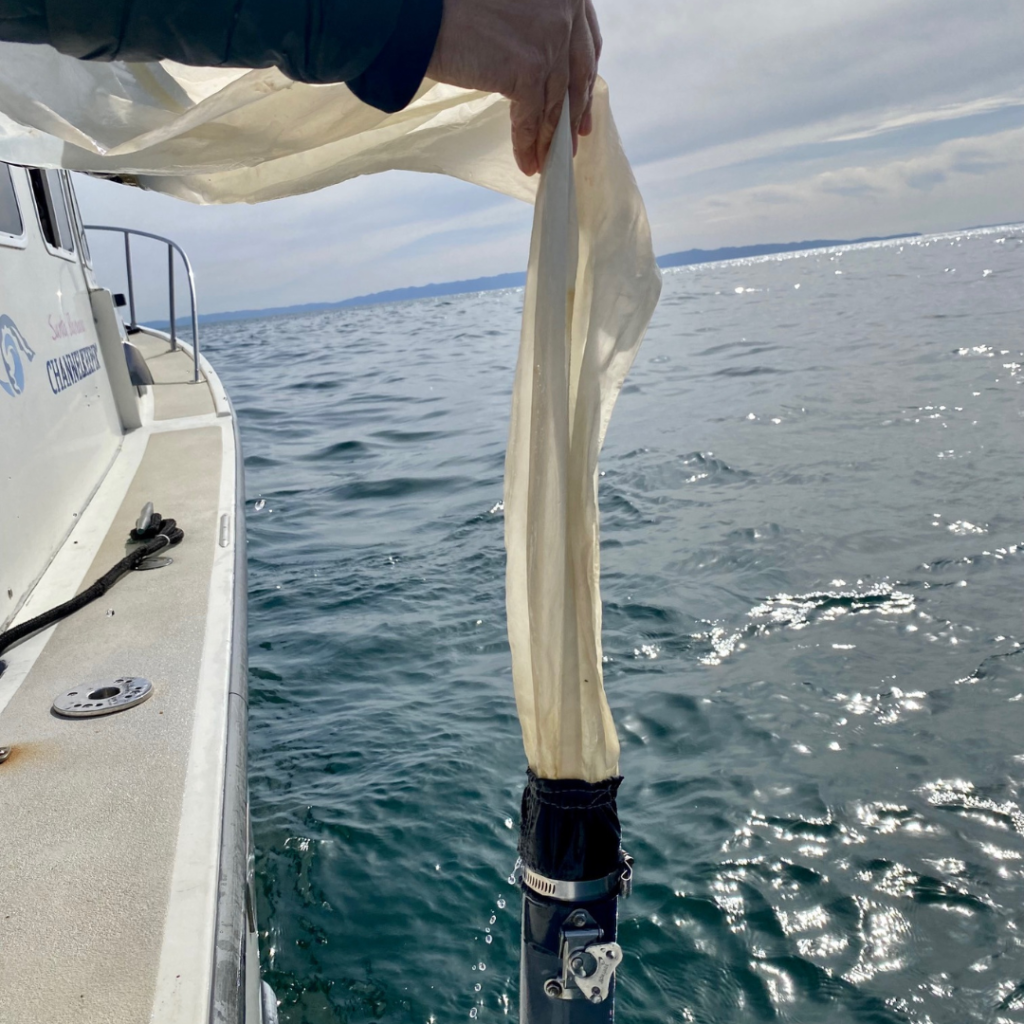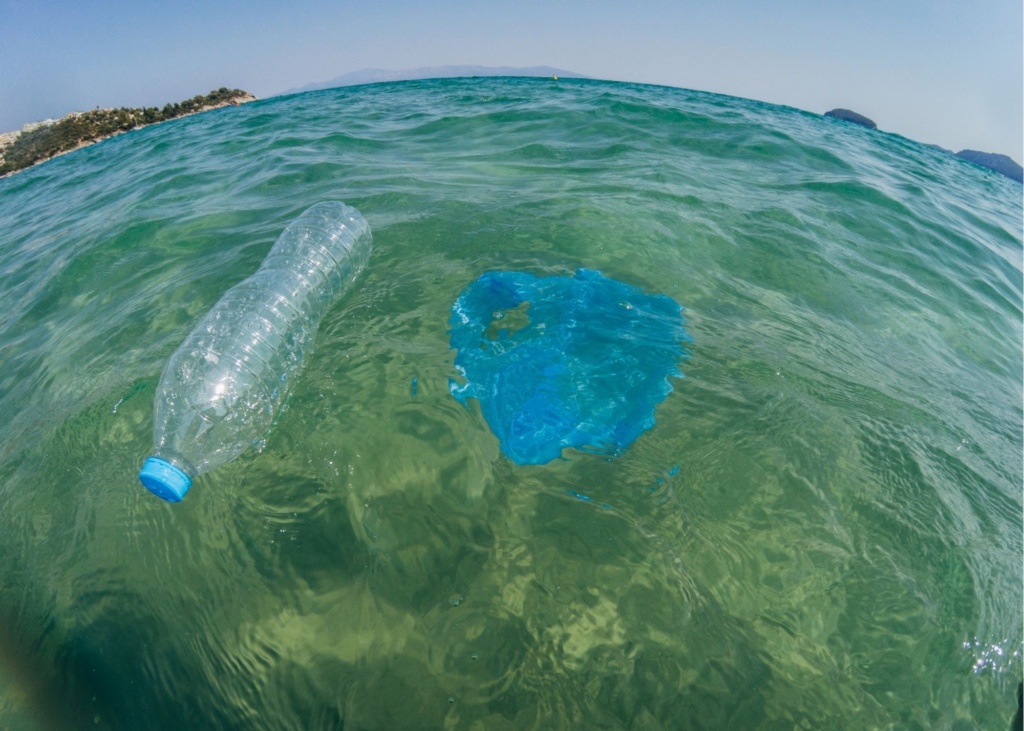Channelkeeper is pleased to welcome Annie Lovell to the team as our new Development Director. In this role, Annie will help develop strategic partnerships and raise funds to support Channelkeeper’s mission and programs.
Annie brings experience in fundraising, grant writing, and community building, along with a deep appreciation for the ocean and a background in environmental science.
We took a moment recently to chat with Annie and learn more about her experience and interests.
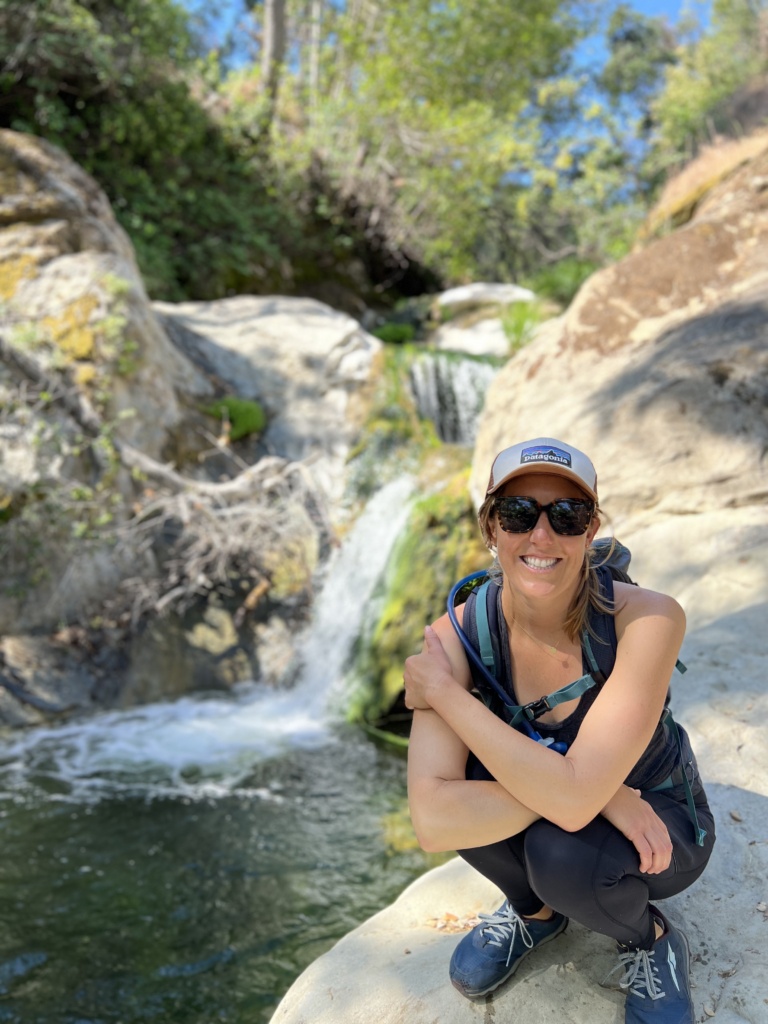
- Tell us a little about yourself. Where did you grow up? What were you interested in as a young person?
I grew up in Arizona and spent a lot of my childhood playing sports, volunteering, camping, hiking, and traveling with my family. I learned how to swim before I learned how to walk, and as a kid, I spent a lot of time underwater in the pool and then swam competitively in high school and into college. I volunteered at various local non-profits, including the foodbank and women’s shelter. I participated in a life-changing service-learning trip to Nicaragua in college. My parents also took us on wonderful family vacations that connected us with nature in different parts of the country. This translated to my spending a lot of time planning trips with friends to explore beautiful areas of the southwest, and then New Zealand, as a study abroad student. These early interests have persisted throughout my life. I was recently looking through my “special box” of memorabilia from my childhood and it was so fun to see how the things I spent my time doing as a child are still my primary interests as an adult.
- It sounds like you have a deep personal connection with the ocean. Mind sharing a little about that?
Many of my childhood summers were spent at the beach. I always loved the ocean, spending hours playing in the waves and collecting shells. When I moved to Hawai’i after college, my love for the ocean deepened. While living on O’ahu I spent as much time as possible playing in the ocean – surfing, outrigger canoe paddling, swimming, scuba diving, and sailing. Water, and the ocean in particular, provides so much to me – it’s my happy place, the basis for my community connections, and I feel most at home when I am in or near the water.
- What inspires your work to protect coastal ecosystems?
When I was living in Hawai ‘I, I began volunteering for local non-profits working to protect the ocean and coastlines, including the Surfrider Foundation and Hui o Ko’olaupoko. The more time I spent at the beach and in the ocean, and the more I learned about coastal and marine ecosystems, the more I wanted to protect these special places. Protecting our coastlines and oceans and the communities that rely on these resources gives me great purpose in my life.
I believe that everyone should have access to clean water, not only in terms of its value to human health, but as a sanctuary for individuals to escape to for recreation, reflection, or connection. For this simple reason, I am motivated to protect these ecosystems for both my own benefit, but also for the benefit of everyone, both current and future generations.
- Do you have a personal hero?
Captain Liz Clark has been a role model and hero since I first learned about her sailing ventures and environmental advocacy. Her capabilities and adventurous spirit inspire me to pursue my dreams and feel capable of anything I set my mind to. I also respect her environmental ethic and how she leads by example. She has done so much to change the perspectives of young women wanting a more conscious and self-aligned life. While not many of us can live this same low-impact, ocean-centric lifestyle, I often dream about one day sailing around the world or living on a remote Pacific Island.
- You have experience in both environmental science and fundraising. Tell us about how you use your superpowers to support environmental conservation.
My 8th grade biology teacher first got me interested in the natural sciences and I went on to get a degree in environmental studies and psychology. Then I began my career in environmental consulting focusing on water resource management. I spent a lot of my time in the field – gathering water samples, building rain gardens, or writing environmental assessments. However, I was always most interested in the human components of the projects – Why would someone care about this work? What policies can be changed to protect our environment in the long term? How can the community be engaged in this work? When I started combining my experience as an environmental scientist with my understanding of human behavior, I found that I was most effective at developing relationships, building community, and communicating the importance of protecting our environment.
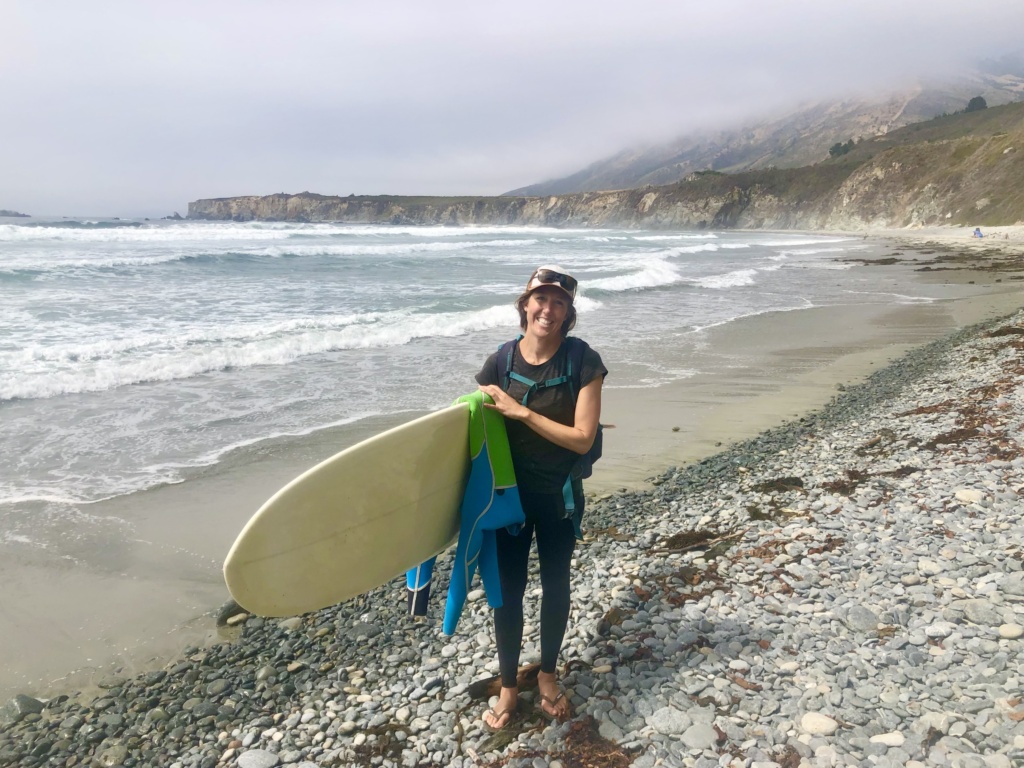
- What aspects of Channelkeeper’s work are you most excited to engage in?
Before moving to Santa Barbara, I spent about five years working for an active travel company, leading hiking and cycling trips around the world. Travel has always been an important part of my life, but it has felt at odds with my environmental values. I’ve been very interested in the sustainable tourism industry and finding ways for travel to have a positive impact on the environment and communities. Therefore, I am excited about engaging in SBCK’s efforts to address the cruise ship industry’s impacts in Santa Barbara.
In graduate school, I also became fascinated with seaweed aquaculture and the development of the industry along the U.S. west coast. I am looking forward to supporting potential opportunities for Channelkeeper to guide responsible aquaculture development. I’m also very excited about participating in the Watershed Brigade cleanups as a way of connecting with the community and getting my hands dirty to protect our watersheds and coastlines.
- Any highlights so far?
Within my first month on the job, a highlight has been developing the relationships between Channelkeeper and the UCSB Bren School of Environmental Science and Management. After graduating from the Bren School in 2022, I wanted to continue my connection with the program. I am now excited to find ways to meaningfully collaborate with students and faculty.
- How do you balance your life? What do you do for fun?
I love to spend as much time in the water as possible – mainly surfing and swimming. I also love outrigger canoe paddling, which is an incredible way to enjoy the ocean and be part of a wonderful community. Other than that, I enjoy hiking, backpacking, riding my bike, and doing yoga. While I prioritize movement and time outdoors, I also love reading and getting together with friends for a meal or venturing to new parts of the world that I have yet to explore.
- If you were an aquatic organism, what would you be and why?
If I were going to be any aquatic organism, I would be a dolphin so that I could swim fast, glide gracefully through the water, and surf the waves. I’ve had a lot of dolphin encounters, and I have never lost my appreciation for their presence and beauty as they play in the water.
If you would like to connect with Annie to personally welcome her, you can reach her at annie@sbck.org.
